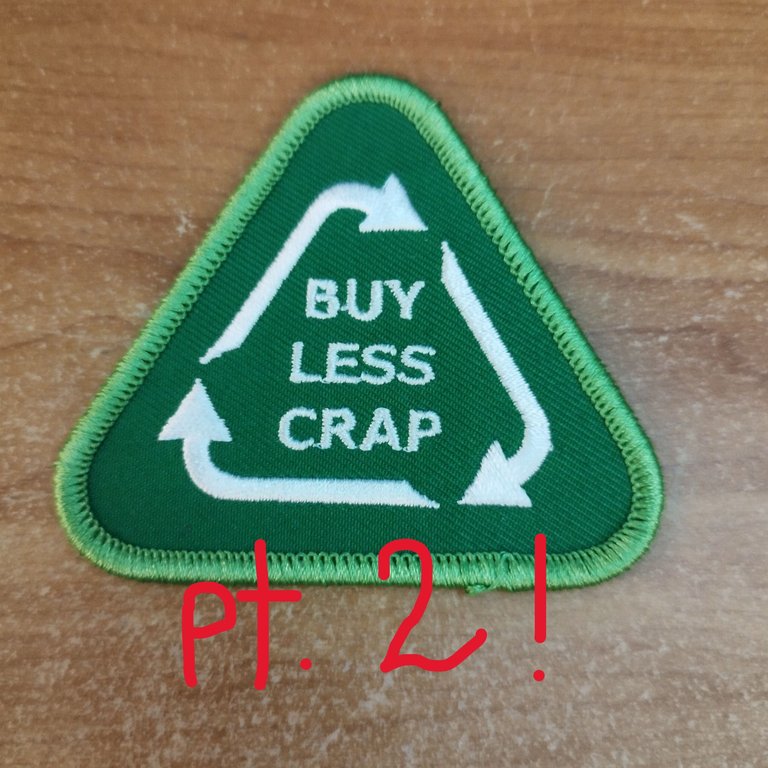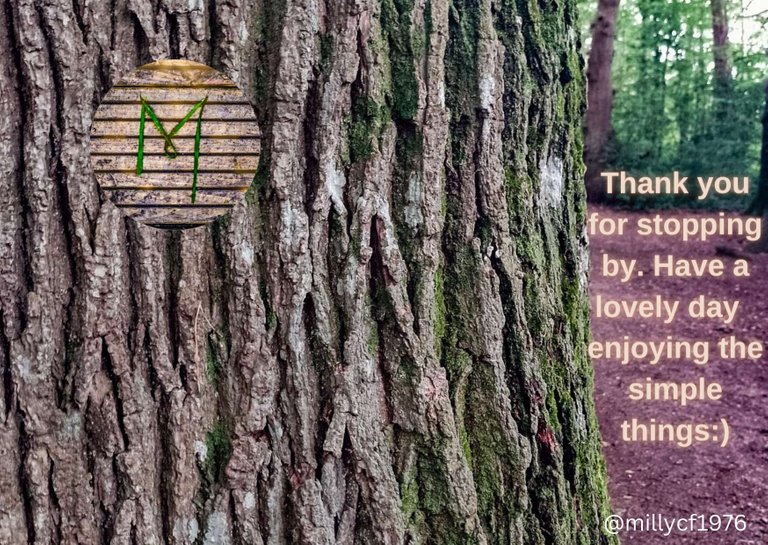Last time I had a rant about buying less, I focused on quality over quantity, reuseables over disposables, and recycled over virgin materials. Today, let's talk about strategies for buying less for people who stress shop or buy on impulse.
Shop Less Often
I know someone who buys on impulse a LOT. She knows this about herself and her strategy that she has tried to employ is to not go to the physical store, where she will see things and buy on impulse, but to order her things online. Okay, but now she's ordering online several times a week. Any time a thought pops into her head of "I want that," she hops on her phone and orders. Is she really saving any money?
My advice if you're like this is, keep a shopping list. Whether that's a note app on your phone or a physical marker board/piece of paper/whatever (I write on my chalkboard), making a list and letting it sit for a while can help you avoid unnecessary purchases. Similarly, if you're a big Amazon shopper, you can go, choose your deals, and stick them on a wish list and let it sit. Give it a week or so and see if you really want that thing. Often times, you'll find that you don't. Don't believe me? If you shop online a lot, how often do you let a package sit unopened for days? My neighbor does. Was it really that important if it's just sitting in an unopened box? Did you really need it? Probably not.

Understand the Psychology of Stores
Did you know that stores are strategically laid out to get you to spend more? Google it, there are tons of stories about the phenomenon. Understanding the basics can help you spend less, too. A primer:
When you walk in the grocery store, what's up front? Produce, generally. I know of one store that's an exception, where they've got fresh baked goods up front. But generally, you walk in, and think, "Mmm, fresh, healthy food, I can buy lots of yummy things here." You have a positive feeling right away.
Think about where milk is in the store. All the way in the back. Because milk (cow or otherwise) is frequently an item that is the reason someone comes to the store in the first place. You think, I'm just gonna go buy some milk and maybe something for dinner and be quick. But in order to get to the milk, you have to run the gauntlet of all the other aisles full of things that might tempt you. If all you're after is milk, power walk past those aisles and don't linger, looking at all the yummy treats. Those end caps (the ends of long aisles, that face the wide, front to back aisles) are prime real estate that companies literally pay to get their products put on so you're tempted by them.
Similarly, companies pay to get their products at eye level. A better deal might be all the way at the top or bottom, because people are just looking at what's easy and not crouching down on the ground. Look high and low, and you might find the better deal than the shiny-but-more-expensive thing right in front of your face. Similarly, companies pay Amazon to put their things at the top of search results. Scroll down, even look at the second or third page of results, and you might find a better deal.
In general, fresh, refrigerated, and frozen foods are on the periphery of a grocery store, and prepared, processed foods (and dry goods like sugar and flour) are in the middle aisles. If all you need is milk and vegetables, go around the edges and avoid the middle.
The cash registers are designed to get you to buy stuff on impulse too. Candy bars and other snacks, drinks, and magazines. Maybe you start reading one in line and throw it in with your purchases. Maybe you think I'm thirsty and grab a bottle of water or soda. If you're thirsty and you don't carry around a water bottle with you (why don'tcha?), and you don't want to wait 'til you get home, then find a drink in the middle aisles or in the refrigerated section in the back (it's probably cheaper). If you're snacky and it's going to be too long until dinner, grab a snack elsewhere too. The register snacks are probably worse for you and priced up for the convenience.
In Conclusion
Don't take a tour of the store, looking for things to catch your eye. Don't go grocery shopping looking for ideas. Browse recipe websites or cookbooks if you need dinner ideas, and go to the store with a list. A list also helps you avoid "Go to the store, buy a bottle of hoisin sauce, open the fridge, oh no! I already have a bottle of hoisin sauce" (that video makes me laugh, btw 😂).
I know this is a very North-America-with-our-giant-supermarkets kinda advice column, but we don't have fresh markets here like y'all do in more human parts of the world ("but we have farmer's markets, Phoenix" ...for two hours once a week across town during the summer months, doesn't really count). If you wonder why Americans eat so much crappy food, it's because the places where we buy food are like 85% crappy food in shiny packages designed to make you waaaaaaant iiiiiiiiit (with ingredients that are often banned in other countries and with more sugar, witness orange Fanta 😩). So I hope it helps someone who always comes home with twenty bags from a Walmart wondering what you just bought because you only went there for milk. ;)
Thanks for reading and have a great day! :)
